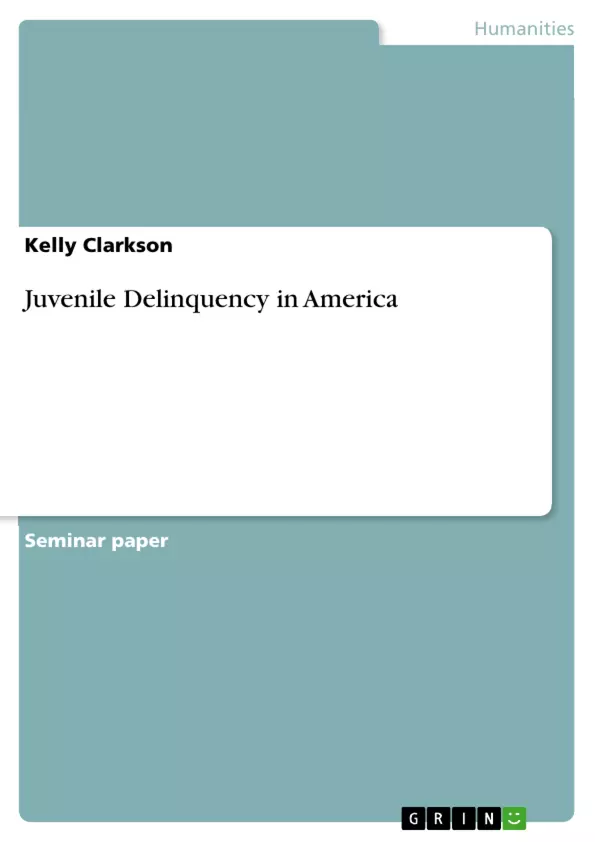Juvenile delinquency has been ranked as one of the most serious problems facing the United States today. It has become a national problem, as opposed to being restricted to the large cities. The nature of juvenile delinquency has changed over time such that the delinquent activities being engaged in by the juveniles have changed over the years. The relevant juvenile justice agents have attempted to prevent and control this vice. However, it seems like more still needs to be done are the methods that have been employed have not yielded the desired results. (Muraskin & Roberts, 2005)
There is no universally accepted definition and approach of addressing juvenile delinquency. For instance, to the criminologists, juvenile delinquency entails all public wrongs committed by the young between the ages of 12 and 20. Sociologists take a broader approach since they postulate that delinquency includes many violations of legal and social norms, including minor offences, serious crimes, committed by juveniles. The sociologists the specifics of youth deviant behavior with the home, peers, family, neighborhood, as well as other variables which, influence the formation of young people’s social environment. It is against this backdrop that this paper seeks to delve into the issue of juvenile delinquency by looking at its causes, prevention, control and the way forward. (Muraskin & Roberts, 2005)
Inhaltsverzeichnis (Table of Contents)
- Juvenile Delinquency in America
- The Nature and Extent of Juvenile Delinquency
- Theories of Juvenile Delinquency
- Early Theories
- Classical School Theories
- Biological Theories
- Psychological Theories
- Sociological Theories
- Critical Theory
- Causes of Juvenile Delinquency
- The Control and Prevention of Juvenile Delinquency
Zielsetzung und Themenschwerpunkte (Objectives and Key Themes)
This paper examines the complex issue of juvenile delinquency in America. It delves into the nature and extent of the problem, explores various theories of causation, and analyzes the methods used to control and prevent it. The paper aims to shed light on the historical evolution of juvenile delinquency, the role of social factors, and the effectiveness of different interventions.
- The nature and extent of juvenile delinquency in the United States
- Different theoretical perspectives on the causes of juvenile delinquency
- The role of social and environmental factors in shaping juvenile behavior
- Strategies for controlling and preventing juvenile delinquency
- The effectiveness of different interventions and the future of juvenile justice
Zusammenfassung der Kapitel (Chapter Summaries)
- Juvenile Delinquency in America: This introductory chapter establishes the prevalence and significance of juvenile delinquency as a national problem. It highlights the changing nature of delinquent activities over time and underscores the need for effective prevention and control strategies.
- The Nature and Extent of Juvenile Delinquency: This chapter defines juvenile delinquency and discusses its characteristics, including status offenses and delinquent acts. It explores the progression of juvenile deviance and examines the relationship between early delinquency and later adult criminality.
- Theories of Juvenile Delinquency: This chapter provides an overview of various theoretical perspectives on the causes of juvenile delinquency. It discusses early theories based on superstition and myth, as well as modern theories stemming from classical, biological, psychological, sociological, and critical perspectives.
Schlüsselwörter (Keywords)
Juvenile delinquency, criminal justice, social factors, theories of causation, prevention strategies, interventions, youth crime, status offenses, delinquent acts, societal norms, criminal behavior, rehabilitation, recidivism, juvenile justice system, American society, social control.
- Quote paper
- Dr Kelly Clarkson (Author), 2012, Juvenile Delinquency in America, Munich, GRIN Verlag, https://www.grin.com/document/213221



